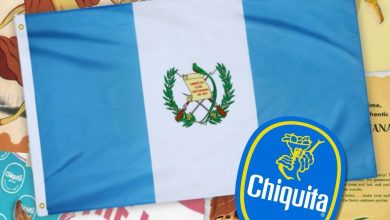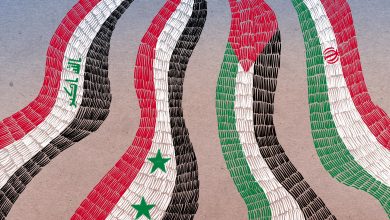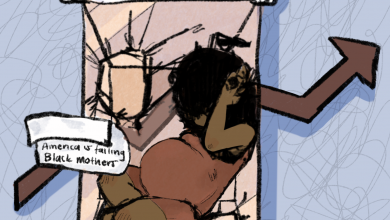All We’ve Learned is White History: Mexican-American Studies in Tucson, AZ

MexAmer by EHDI5YS via Wikimedia Commons | Public Domain
It has long been understood that history has always been written by the victors. Those forced to fall have consequently had their narratives written in ways that suit their conquerors.
In 1998, a group of primarily Mexican-American teachers of the Tucson Unified School District founded its Mexican-American Studies, or La Raza Studies, program. In a district that is over 60 percent Hispanic, the new curriculum sought to improve student test scores and participation in schools through teaching works from people who had similar cultural backgrounds. The program ran successfully until 2010, when Arizona Republicans passed a law to ban the subject from Tucson’s public schools. Though the program was re-established in 2013, the case has returned to federal court to reach a final judgment.
Controversy over the teaching of ethnic studies is not new. W.E.B. DuBois advocated for the teaching of African-American studies in the early 1900s, discussing how Black history and heritage was being completely ignored in schools. In 1968, students at San Francisco State University went on strike, demanding ethnic studies classes and later achieving a success that would change higher education throughout the country. Today, nine of the ten UC campuses in California have ethnic studies programs.
In each of the high schools in which they have been implemented, ethnic studies programs have been found to improve the performance of its students, particularly those of different ethnic backgrounds. Studies conducted on high risk students, defined as those at risk for dropping out, revealed significant progress: students had boosted attendance, better academic performance, and had increased their chances of completing high school by nearly 10 percent. Grade-point averages increased by an average of 1.4 points, and students behind on credits were able to earn, on average, 23 more credits toward their graduation. Students who had taken the Mexican-American Studies classes offered by T.U.S.D. had graduated at higher rates and performed better on state tests. A report on academic performance in the social sciences, such as the field of ethnic studies, found that “students who receive effective education in social studies are more likely to vote, four times more likely to volunteer and work on community issues, and are generally more confident in their ability to communicate ideas with their elected representatives.”
Ethnic studies programs have been found to not only be of value to minority students, but also to white students. Educators have emphasized the importance of exposing minority students to discourses of race and power and its connection to their everyday lives. They have also discussed the importance of having white students understand that, historically, not all people were seen as equal, and not all races are granted the same privileges that they possess.
The discomfort that arises during discussions of the intersections of race and privilege have appeared in this case for the T.U.S.D. In each of the instances where the case was brought to court, conservative representatives of the state of Arizona claimed that the Mexican-American studies curriculum taught students “anti-American, anti-white sentiments,” and politicized students to make them resent white people. The former Arizona State Superintendent of Public Instruction, Tom Horne, who proposed the initial ban against the program in 2010, claimed that “ethnic programs…[were] designed to promote ethnic chauvinism.” Horne’s 2010 bill, House Bill 2281, forbade any classes that he believed “[promoted] resentment toward a race or class of people,” and “[were] designed primarily for pupils of a particular ethnic group.” Horne’s predecessor for Superintendent, John Huppenthal, criticized the “oppressed-oppressor framework” he believed the class to be based off. Both of these men are white.
There is an unwillingness in the United States to confront the racism between whites and non-whites. There is an aversion to the uncomfortable truth that systems of racism and systems of oppression still exist for non-white individuals.
In 2015, a McGraw Hill history textbook described the Africans who were forcefully enslaved and brought to the United States as “workers.” Columbus Day is still celebrated in many areas of the United States, though it is well-known that indigenous populations were eradicated in countless genocides following his arrival. The history of the American railroad is often accompanied by accolades regarding its contribution to the industrial modernization of the United States, but overlooks the countless Chinese immigrants who died during its construction. Those with anti-immigrant sentiment toward persons of Hispanic and Latinx heritage ignore the social and geographic history that ties Hispanic and Latinx history to the United States, including the Bracero Program and the Mexican-American War.
The Mexican-American studies program for the Tucson Unified School District was not only implemented as a means to close the disturbingly wide achievement gap between their non-white and white students, but also to work on the self-image of their predominantly Hispanic population. The only history that many students learn in the United States is “white history” – the lives of great white men, events decided by white individuals, lands conquered by people of light-skinned complexions. This is no different for the students of T.U.S.D. These Brown-skinned students do not often see themselves in the pages of history or works of literature, but their Mexican-American Studies classes have granted them this chance.
It has been long understood that history has always been written by the victors. All those who were forced to fall had their narratives changed in order to suit their conquerors. However, the descendants of those who fell have been able to rise up and take back their narratives. They have risen up to tell their truths.




